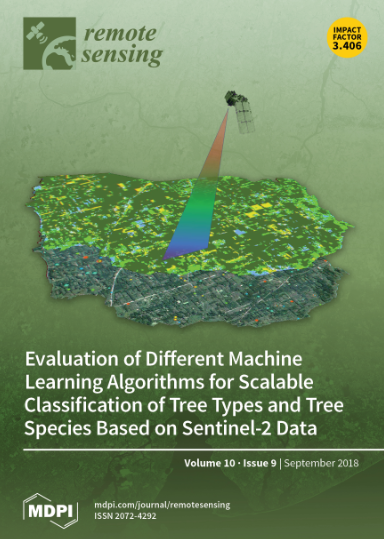具有自然超敛点的等参数 DGGS 单元的球形磁矢量转发
IF 4.2
2区 地球科学
Q2 ENVIRONMENTAL SCIENCES
引用次数: 0
摘要
随着卫星遥感技术的突飞猛进,包括 NASA、ESA、NAOC 和 Roscosmos 在内的许多科学家和组织都在观测和研究地磁场的显著变化,这极大地促进了地磁场研究,使其成为地球系统科学的一个重要研究方向。在传统的地磁场研究中,魔方单元面临着高纬度地区的退化问题和精度限制。为克服这些限制,本文引入离散全球网格系统(DGGS)构建地球物理模型,通过多级网格细分实现全球无缝覆盖,显著提升了多源、多时空数据的处理能力。针对 DGGS 单元缺乏解析解和明确积分极限的难题,基于等参数变换原理,提出了构建任意等参数单元形状函数的方法,并成功推导出了等参数 DGGS 单元的形状函数。在磁矢量转发中,考虑到泊松公式引起的潜在误差放大,将 DGGS 网格划分为六个规则的三角形子单元。采用三角形超敛点技术,根据对称规则精确确定积分点的位置及其权系数,从而在不增加计算复杂度的情况下显著提高了计算精度。最后,本研究通过基于微小魔方单元的正演建模算法,全面对比分析了基于 DGGS 的磁矢量正演算法的计算精度,验证了所提方法的有效性和优越性,为地球物理研究提供了新的理论支持和技术手段。本文章由计算机程序翻译,如有差异,请以英文原文为准。
Spherical Magnetic Vector Forwarding of Isoparametric DGGS Cells with Natural Superconvergent Points
With the rapid advancement of satellite remote sensing technology, many scientists and organizations, including NASA, ESA, NAOC, and Roscosmos, observe and study significant changes in the geomagnetic field, which has greatly promoted research on the geomagnetic field and made it an important research direction in Earth system science. In traditional geomagnetic field research, tesseroid cells face degradation issues in high-latitude regions and accuracy limitations. To overcome these limitations, this paper introduces the Discrete Global Grid System (DGGS) to construct a geophysical model, achieving seamless global coverage through multi-level grid subdivision, significantly enhancing the processing capability of multi-source and multi-temporal spatial data. Addressing the challenges of the lack of analytical solutions and clear integration limits for DGGS cells, a method for constructing shape functions of arbitrary isoparametric elements is proposed based on the principle of isoparametric transformation, and the shape functions of isoparametric DGGS cells are successfully derived. In magnetic vector forwarding, considering the potential error amplification caused by Poisson’s formula, the DGGS grid is divided into six regular triangular sub-units. The triangular superconvergent point technique is adopted, and the positions of integration points and their weight coefficients are accurately determined according to symmetry rules, thereby significantly improving the calculation accuracy without increasing the computational complexity. Finally, through the forward modeling algorithm based on tiny tesseroid cells, this study comprehensively compares and analyzes the computational accuracy of the DGGS-based magnetic vector forwarding algorithm, verifying the effectiveness and superiority of the proposed method and providing new theoretical support and technical means for geophysical research.
求助全文
通过发布文献求助,成功后即可免费获取论文全文。
去求助
来源期刊

Remote Sensing
REMOTE SENSING-
CiteScore
8.30
自引率
24.00%
发文量
5435
审稿时长
20.66 days
期刊介绍:
Remote Sensing (ISSN 2072-4292) publishes regular research papers, reviews, letters and communications covering all aspects of the remote sensing process, from instrument design and signal processing to the retrieval of geophysical parameters and their application in geosciences. Our aim is to encourage scientists to publish experimental, theoretical and computational results in as much detail as possible so that results can be easily reproduced. There is no restriction on the length of the papers. The full experimental details must be provided so that the results can be reproduced.
 求助内容:
求助内容: 应助结果提醒方式:
应助结果提醒方式:


